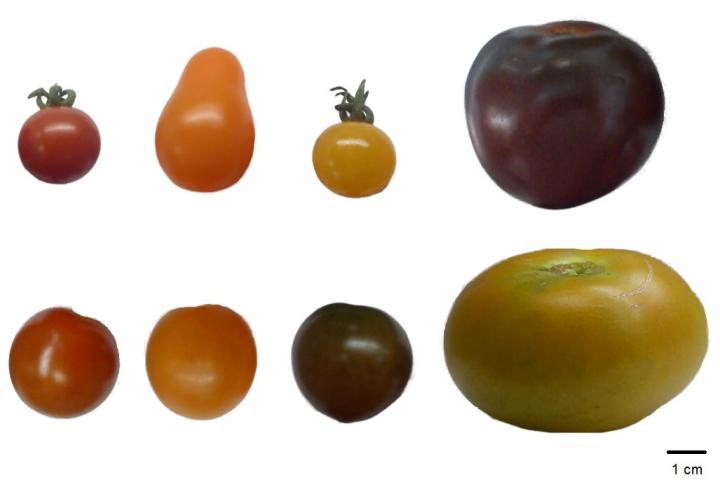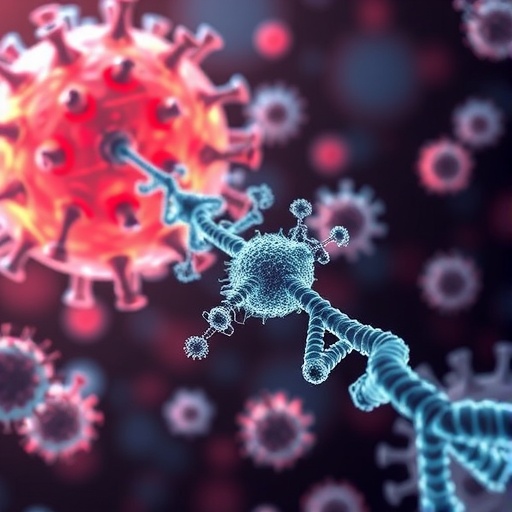Specific antioxidants are associated with particular tomato colors

Credit: Laura J. Pérez-Flores
Naturally occurring antioxidants have been of great interest in recent years due to their recognizable health benefits. A study out of Universidad Autónoma Metropolitana in Mexico has clarified differing antioxidant levels by focusing on eight tomato genotypes with different-color fruit.
Laura Pérez-Flores led a team of researchers in an evaluation of the variation in carotenoid, polyphenol, and tocopherol content among selected hybrid and native tomato lines as well as assays for antioxidant capacity of the fruit. In addition, the expression of isoprenoid metabolism-related genes and two pigmentation-related transcription factors were determined.
Pérez-Flores explains, “Tomatoes are the major dietary source of antioxidants; however, little is known about their contents and regulation in genotypes of different colors, shapes, and sizes. The association of greater levels of specific antioxidants with particular colorations of tomato fruit suggests a ‘balance’ between these compounds.”
The findings of these researchers are illuminated in their article “Antioxidant Balance and Regulation in Tomato Genotypes of Different Color”, found in the current issue of the Journal of the American Society for Horticultural Science.
Tomato fruit are an excellent source of antioxidants and contribute significantly to human health because of their anti-inflammatory, antiallergenic, and antithrombotic properties. The results of this study support either the direct commercialization of tomatoes with different color fruit or use of their genotypes in breeding programs to increase antioxidant levels among existing cultivars.
Carotenoids and tocopherols are among the major lipophilic antioxidants present in tomatoes. Polyphenols are powerful antioxidants that have been reported to interfere with the initiation, promotion, and progression of cancer. The main tomato polyphenols are hydroxycinnamic acids, flavanones, flavonols, and anthocyanins.
In recent years, the biosynthetic pathways of carotenoid, tocopherol, and chlorophyll have been studied because of their importance in understanding the regulatory cross-talk that contributes to the nutritional quality of tomato fruit.
The study was conducted in Mexico, which is a center of diversification and domestication of tomato and thus offers a wide range of native genotypes with fruit of different colors, shapes, and sizes. These genotypes could be integrated into breeding programs aiming to increase the nutraceutical properties of commercial cultivars and recover antioxidant compounds that have been lost through the selection process.
All genotypes used in this study were part of the Mexican Network of Plant Genetic Resources. The studied lines, native and hybrid, were planted in a completely randomized block design with three replications, and each experimental unit comprised 10 plants.
The researchers found that greater levels of specific antioxidants were associated with particular colorations of tomato fruit. These genotypes could be used either directly as food or in breeding programs to recover greater levels of functional compounds such as carotenoids, tocopherols, anthocyanins, and vitamin C.
###
The complete article is available on the Journal of the American Society for Horticultural Science electronic journal web site: DOI: https:/
For additional insight, contact Laura J. Pérez-Flores of Universidad Autónoma Metropolitana at [email protected] or call her at (552)690-2958.
Founded in 1903, the American Society for Horticulture Science (ASHS) is the largest organization dedicated to advancing all facets of horticulture research, education, and application. More information at ashs.org.
Media Contact
Michael Neff
[email protected]
Related Journal Article
http://dx.




